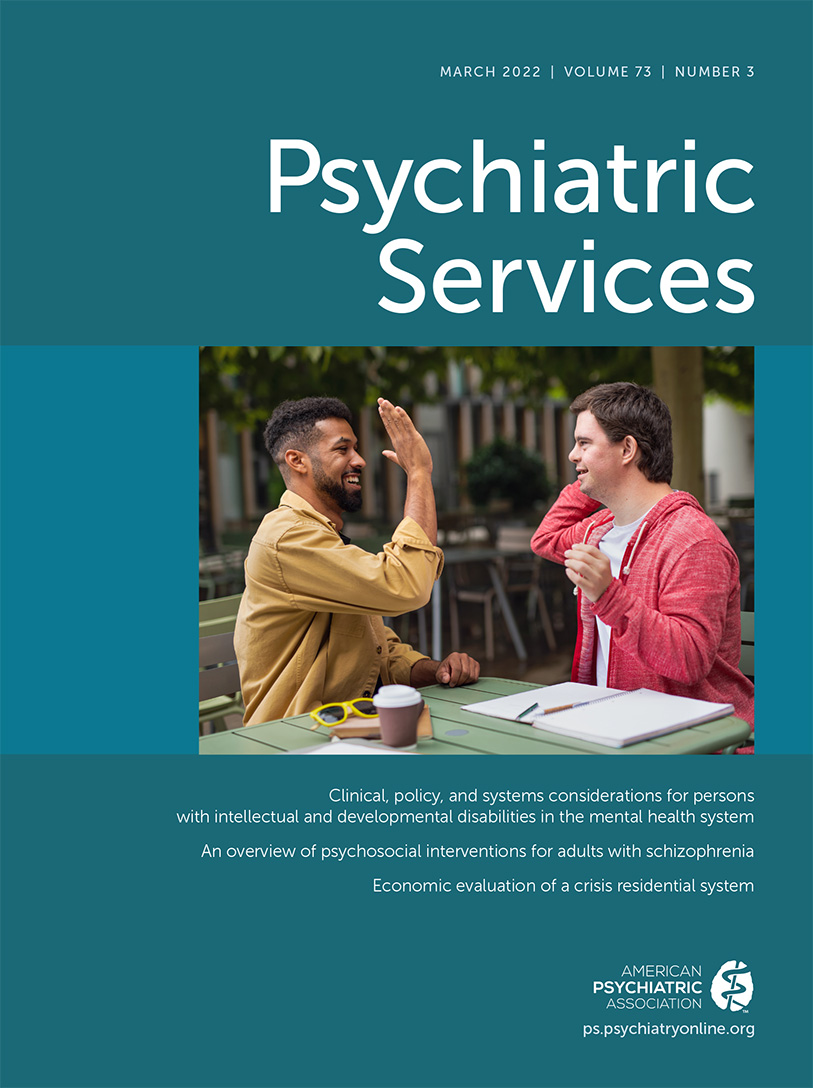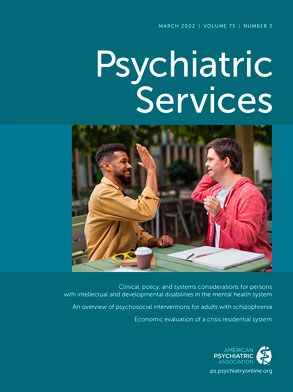According to the Centers for Medicare and Medicaid Services, habilitative services are “Health care services that help a person keep, learn or improve skills and functioning for daily living” (
46). After the
Olmstead decision in 1999, most persons with IDD now live in the community. Federal waivers that provide support to persons with IDD living in the community require state assurances that the health and safety of these individuals are preserved through the ongoing provision of habilitative, medical, and support services. Federal waivers may provide for the housing needs of these individuals, or they may be supported in their own or family home. Habilitative services provided through waiver programs may include necessary staffing, supported employment, and assistance via coordination services. Additional habilitative services provided through federal waivers or state Medicaid plans may include physical and occupational therapy, speech-language pathology services, and other services for people with disabilities in various inpatient or outpatient settings (
46). The supports described below are those most directly related to mental health care, but they do not reflect the total array of supports that may be needed or might be available.
Behavioral Supports
Behavioral supports are important at all stages of life, although some have suggested that individuals ages 16 to 22 have the greatest need for support, compared with the other age groups, suggesting that this period is an important area of focus (
47). Among persons with IDD, challenging behavior can present for a multitude of biopsychosocial reasons, with functions including attention seeking, escape, access to tangible items, or automatic behaviors. Challenging behavior can present as aggression toward others or the environment, impulsivity, self-injury, or behaviors that are seen as socially unacceptable and may affect an individual’s adaptive functioning in the community. For example, an individual may engage in repetitive head banging to escape from an undesirable task or to seek attention. Although the data vary, some have estimated that the prevalence of behavior problems among persons with comorbid ASD and IDD is approximately 50% and that levels of severity of problem behavior can range from minor and time limited to severe, chronic, and potentially life threatening (
48,
49).
Provision of appropriate behavioral supports requires an analysis of the environments, the relationships, and the requirements placed on an individual. Given the prevalence of trauma in the lives of persons with IDD, the analysis should consider abuse, neglect, medical pain, or comorbidities, as well as irritation at staff turnover in the home. Behavioral supports include a variety of strategies that creatively avert challenging behaviors.
From a behavioral perspective, maladaptive or challenging behavior serves the purpose of getting a need met. All behavior, challenging or adaptive, can be construed as a learned behavior that has been historically reinforced by meeting a need or achieving a goal in some way. The task is to understand how challenging behaviors have been reinforced, perhaps inadvertently, and to change the reinforcement schedule to favor adaptive behaviors. Persons with IDD may have little pragmatic language or may lack the ability to communicate their needs. They may have receptive difficulty interpreting ordinary language, common idioms, social cues, tone of voice, facial expressions, or any other communication shortcuts. Again, regardless of verbal expressive abilities, what is said is less important that what is communicated in an array of nonverbal ways. Given these constraints, it is better to ask, “What does the behavior usually achieve?”
A biopsychosocial approach is an essential first step for the psychiatric clinician endeavoring to understand behavior and will be discussed in greater detail below; however, person-centered behavioral interventions would ideally occur prior to pharmacological intervention (
50). Because systems now aim to prevent use of restraints, effective behavioral supports clarify the function of the behavior, are culturally appropriate, and are designed to meet the specific needs of the individual, with goals of removing environmental precipitants of challenging behaviors, emphasizing the idea of choice, and focusing on social integration (
51).
Applied behavior analysis (ABA) is often linked to ASD, but the overarching principles involved in ABA are useful in intervening in all kinds of challenging behavior. Functional behavior assessment (FBA) is an umbrella term that consists of a variety of methods to hypothesize the function of a behavior. These include indirect measures, direct observation, and an experimental functional analysis method, which implies a strictly controlled experimental condition designed to understand the function of a challenging behavior by manipulating an independent variable. In FBA, an appropriately trained clinician observes the individual in multiple natural environments, interviews caretakers, and organizes data to reduce the challenging behavior. Shawler et al. (
52) found that use of FBA to treat self-injury has dramatically increased since the 1990s and has continued to grow steadily.
Over the years, as the focus and literature base for identifying the function of behaviors has grown, additional models, such as those focused more on maximizing positive behaviors and incorporating the relationship with the individual, have been evolving, moving far away from the previously accepted use of aversive stimuli (
53). Both ABA and positive behavior support approaches examine behavior and help the individual function more optimally in his or her environment. Positive behavior interventions and supports, used in school systems originally, has been extended to the IDD population and the population of persons with serious mental illness in state hospitals and other parts of the mental health continuum of care.
A review of more than 100 studies involving young people with co-occurring ASD and IDD and challenging behaviors found that behavioral interventions, such as those described above, resulted in more than 86% of individuals benefiting from treatment; 65% were characterized as “responders,” whose problem behavior was reduced by more than 80% (
48). In addition, use of behavioral intervention strategies with a consequence-based structure and clear limits (i.e., withdrawal of privileges), along with reinforcement of positive behaviors as described above, is often recommended (
50). Mental health professionals should work with individuals with appropriate training in FBA to achieve the best possible gains for individuals being served.
Pharmacologic and Nonpharmacologic Therapeutic Supports
Appropriate and effective pharmacologic supports depend on accurate and detailed assessments leading to plausible diagnostic hypotheses. The biopsychosocial model can facilitate this approach. During the first psychiatric encounter in an emergency, urgent, or nonacute setting, a critical task is to get an understanding of the baseline of the person with IDD. Subsequent clinical inquiry emphasizes psychosocial changes, symptoms or behavioral changes indicative of medical issues, trademark behaviors and their function, history of trauma, and, finally, any evidence that may support the assignment of a diagnosis of a mental or substance use disorder.
The impact of psychosocial stressors tends to be underestimated in this population. The effects of changing group living environments, changing staff, lack of access to family, seeing siblings achieve adult milestones, and losing parents to death and old age tend to be minimized. There is a definite role for psychotherapy in understanding the emotional response of the person with IDD and assisting the person to process events and his or her responses. Any diagnostic hypothesis has to be put in context. Knowing if the person has reacted to a similar stressor in an equivalent way in the past builds an understanding of his or her behavioral function.
Medical conditions can also be overlooked among individuals who are not well equipped to localize pain, describe symptoms, or assist the clinician in other ways to identify a somatic condition. Behavior to achieve a function is discussed above. For some individuals, aggression and property destruction or disruption, as well as self-injurious behavior, might be a method of expressing pain or distress from a medical condition. Empirical data on this linkage are lacking, yet impacted wisdom teeth, migraine headaches, severe premenstrual syndrome, peptic ulcer disease, and gastroesophageal reflux disease are all common medical conditions that can be very painful or distressing and that do not manifest outwardly, even to observant treatment providers. Suspicion of painful conditions should be followed up with proper medical attention.
Gaining a sense of the usual temperament and personality style of the person with IDD helps to filter possibilities. Trauma and its impact on personality and temperament are more challenging to identify and address in this group, compared with more neurotypical individuals, and often confound pharmacologic treatments. Arriving at a psychiatric diagnosis also depends greatly on accurate data transfer from the home environment. Data about sleep, weight changes, or shifts in appetite can be helpful clues indicating psychiatric illness, if these data have not been obscured by other pharmacologic interventions.
A major departure from an individual’s baseline, which cannot be convincingly attributed to other factors, may at least warrant an empiric trial of a psychotropic agent expected to address the identified symptoms. This is best done with the support of a behavioral plan developed after careful analysis (described above) and with a review of data on behavioral targets that the clinician anticipates will be affected by the medication. Most often these targets are physical aggression, property destruction or disruption, verbal aggression or disruption, elopement, and sexually inappropriate behavior. All these behaviors tend to arouse strong emotions among caretakers, highlighting why it is important to have data rather than anecdotal report. No clinician should prescribe medications as part of a long-term treatment plan to simply and solely suppress undesired behavior.
If medications are ultimately deemed appropriate, they are best initiated by conducting empiric trials, using data-driven feedback. It is critical for the prescriber to maintain an open mind that allows constant reassessment of information at hand. Strong collaboration should be practiced between clinical team members, including psychiatrists, direct support professionals, clinicians, family, and the person in treatment, so that treatment is person centered. Medications can be associated with significant risk and adverse outcomes. Persons with IDD should not be unnecessarily exposed to these risks, especially because the evidence base for psychopharmacology in this population is limited.
An important consideration is the risk of polypharmacy, which may lead to complex drug-drug interactions and erosion of the individual’s quality of life. Although the quality and quantity of research on this subject are limited, low-dose antipsychotics, such as risperidone, are the most commonly used pharmacologic intervention, followed by antidepressants and mood stabilizers (
54). Many medications investigated in studies on this topic are being used off-label—that is, not for the indication approved by the Food and Drug Administration (
55). The National Core Indicators published a report in 2012 examining use of medications in public IDD systems (
56). The final data set included 8,390 adults, and the study found that 53% of them were taking medication to address one of three mental health conditions (mood, anxiety, or psychosis) or behavioral challenges—or a combination of those issues. Given the complexity of prescribing medications for this population, whether those medications were actually indicated is difficult to know. This difficulty highlights the challenge of prescribing medications in this population—namely, the risk of undertreating an actual, comorbid psychiatric disorder versus inappropriately medicating a behavioral issue.

